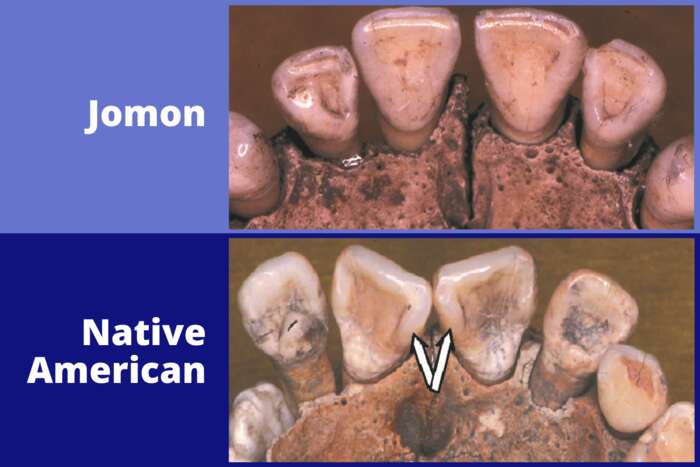A widely believed theory about the origins of Native Americans has been dealt a huge blow by a new genetic analysis of ancient teeth, implying the ancient inhabitants of what is now America were not who we thought they were.
The theory, largely based on archaeological evidence found at Native American sites, claims that the First Peoples came to the continent from Japan around 15,000 years ago. Stone tools and other stone artifacts used by Native Americans show similarities to those of the Jōmon people, a diverse hunter-gatherer people who lived in ancient Japan from around 14,000–300 BCE.
Based on this and analysis of their migration across the continent, it’s been suggested that Native Americans made their way across the northern rim of the Pacific Ocean, across the Bering Land Bridge – dry land that connected Siberia and Alaska during the last ice age – until they reached the northwest coast of North America.
That much may still be true, however, a study published in the journal PaleoAmerica has found that Native Americans were most likely not descendants of the Jōmon people of Japan. The team, led by Professor Richard Scott of the University of Nevada-Reno, analyzed ancient teeth found in the Americas, Asia, and the Pacific. The teeth from Native Americans showed little relationship to those of the Jōmon people, with further genetic testing showing the same result.
“We found that the human biology simply doesn’t match up with the archaeological theory,” Professor Scott, said in a statement. “We do not dispute the idea that ancient Native Americans arrived via the Northwest Pacific coast—only the theory that they originated with the Jōmon people in Japan.”

With only 7 percent of teeth samples of the Jōmon people’s teeth being linked to the non-Arctic Native Americans, and genetic evidence backing this up, it’s likely that Native Americans came from elsewhere.
“These people (the Jomon) who lived in Japan 15,000 years ago are an unlikely source for Indigenous Americans. Neither the skeletal biology or the genetics indicate a connection between Japan and the America,” Scott added.
“The most likely source of the Native American population appears to be Siberia.”
Though the team is confident in their findings, the study was limited by the teeth and DNA samples taken from the Jōmon people being less than 10,000 years old, after the first Native Americans are thought to have arrived on the continent. The team believes that the samples are “valid proxies” of the Jōmon population that had lived in Japan for 5-6,000 years before that.
Adding to evidence that the First Americans did not come from Japan is a new footprint found at an ancient lakebed in what is now White Sands National Park in New Mexico. The footprints date back from between 23,000 and 21,000 years ago, long before we previously thought humans had arrived on the continent.
“In the light of the findings, this means the earliest migrations would have come via Asia, over the Bering Land Bridge, and into Alaska. We previously thought that they would move south after around 16,000 [years ago] when the Ice sheets melted and a migration corridor opened, but the earlier date from White Sands shows that humans were already in the Americas,” Dr Sally Reynolds, co-author of the team that confirmed the prints were made by humans, told IFLScience. “This means that humans migrated into the Americas much earlier, but still via the same route.”
Whether the footprints are definitively linked to Native Americans is yet to be seen, but for now, it seems the old theory that Native Americans made their way from Japan has been debunked.
“The Incipient Jomon population,” Dr Scott concludes, “represents one of the least likely sources for Native American peoples of any of the non-African populations.”
A version of this article first appeared in October 2021.
Source Link: Native Americans Are Not Who We Thought They Were, Study Suggest